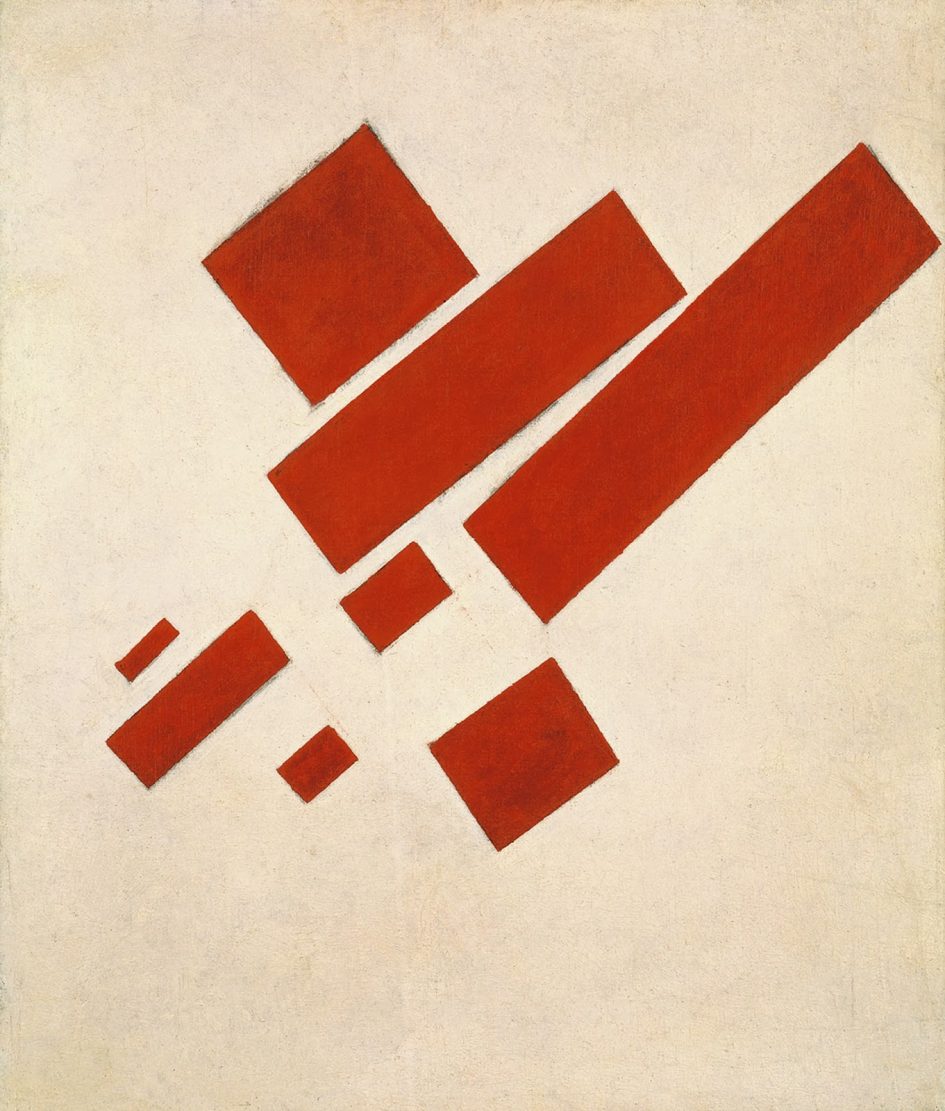3.4 Utopian Dreams: Russian Avant-Garde, De Stijl, and American Social Realism
Russian Avant-Garde
The early twentieth century saw monumental upheaval in Russia, and art was right in the thick of all of this social and political change. Drawing from Cubism and moving further into abstraction, Kasimir Malevich (1879-1935) reduced painting down to pure form by exploring the square. His movement, which he dubbed Suprematism, was meant to be an abstract and universal language.
Primary Source: Malevich, Non-Objective Art and Suprematism
Looking at these paintings and reading Malevich’s words, how does he arrive at the square? What in these works challenges previous notions of paintings? Where is art supposed to go from here (to Malevich’s thinking)?
Thinking about abstraction, materials, and form in a very different way, the Constructivists were interested in bringing form and design into everyday life through propaganda, design, and mass production. Unlike Malevich’s spiritual aspirations, the Constructivists were interested in making their projects integral to society. They took up the Bolshevik cause following the October revolution of 1917 and made work that was meant to further the aims of the Soviet Republic.
How does Constructivism bring together art and design? What does their interest in materials do to the aesthetics of the works they create? How is this a decidedly modern movement?
De Stijl
In the Netherlands, a group of artists were also interested in finding a universal language through abstraction as well as merging the interests of fine arts and design. Piet Mondrian (1872-1944), the most important painter of the group, sought a universal language of pure abstraction–what he called Neo-Plasticism, referring to a new goal for the plastic to become pure form. Mondrian was for a time associated with a larger Dutch movement called De Stijl (“The Style”). This group employed primary colors and bold black and white design similar to Mondrian’s paintings, but in a large range of media and design fields.
Smarthistory: Mondrian, Composition with Red, Blue, and Yellow
Primary Source: De Stijl Manifesto
What makes this manifesto modernist? How does it compare with the other manifestos we’ve read this semester? Where do you think the drive towards the “universal” evident in much of their work comes from?
Resisting Abstraction: American Social Realism
While some inter-war movements like those discussed above sought a universal language through abstraction, many artists in the United States instead opted for artworks dealing with social issues and injustice in a representational format meant to be accessible by a wide audience.
Smarthistory: Jacob Lawrence, The Migration Series
Met: Thomas Hart Benton, America Today Mural
Outline for Class Notes
